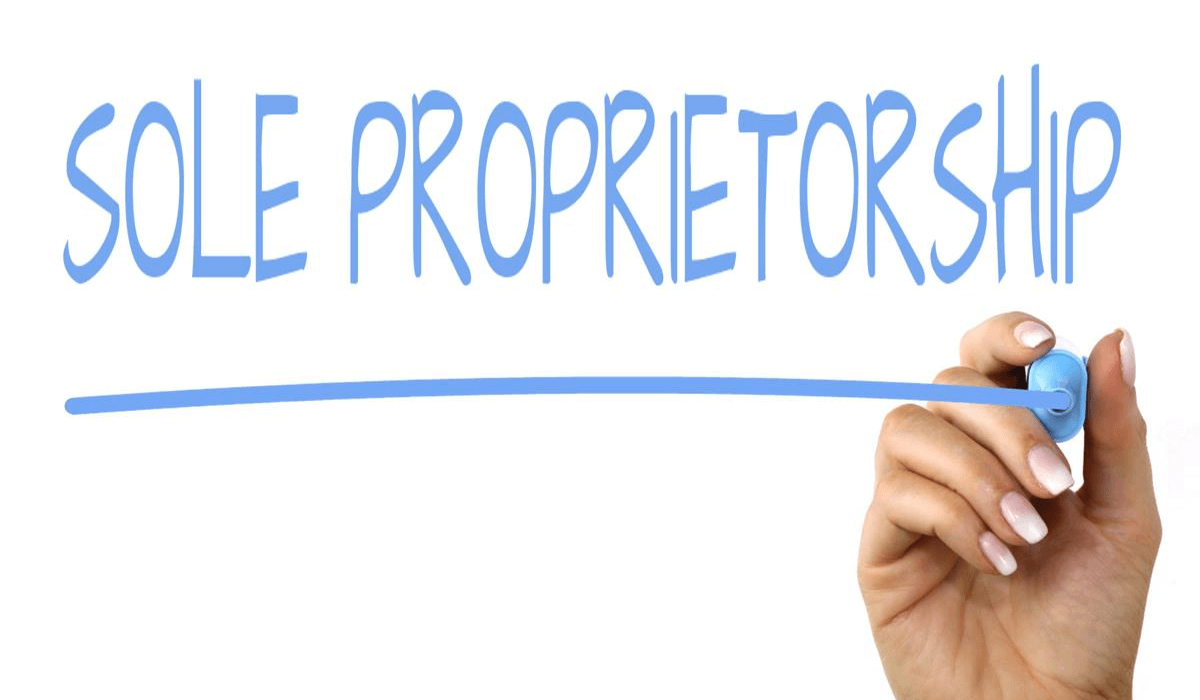Are you thinking about starting your own business? One of the most common business structures in the United States is a sole proprietorship. It’s essential to have a clear understanding of what a sole proprietorship is, its advantages and disadvantages, and how to start one.
A sole proprietorship is the simplest form of business ownership, where one individual operates the business as the sole owner. There is no legal distinction between the business and the owner, meaning the owner has unlimited liability for all the business’s debts and obligations.
Starting a sole proprietorship is relatively straightforward, as it doesn’t require any formal legal steps. It’s important to check if you need any licenses or permits specific to your industry or location. If you plan to operate under a name different from your own, you may need to register a Doing Business As (DBA) name.
Sole proprietorships offer several advantages, including minimal paperwork, low setup costs, and complete control over decision-making. Taxes for sole proprietorships are also simplified, as the profits are treated as personal income. However, there are also disadvantages to consider, such as unlimited personal liability and limited access to funding.
Throughout this article, we will delve into the definition of a sole proprietorship, the steps to start one, its advantages and disadvantages, and how it compares to other business structures like corporations and partnerships. We will also provide examples of sole proprietorship businesses and discuss tax considerations for sole proprietors.
By the end of this article, you will have a comprehensive understanding of sole proprietorships and be better equipped to make an informed decision about the best structure for your business.
Key Takeaways:
- A sole proprietorship is the simplest form of business ownership, where one individual operates the business as the sole owner.
- Starting a sole proprietorship is relatively easy and doesn’t require formal legal steps, but you may need licenses or permits.
- The advantages of a sole proprietorship include minimal paperwork, low setup costs, and complete control over decision-making.
- Disadvantages include unlimited personal liability and limited access to funding.
- Sole proprietorships can be compared to other business structures like corporations and partnerships, each with its benefits and considerations.
Sole Proprietorship Definition
A sole proprietorship is a non-registered, unincorporated business run solely by one individual proprietor with no distinction between the business and the owner. The owner is entitled to all profits but is also responsible for the business’s debts, losses, and liabilities.
Unlike other business structures, such as corporations or partnerships, a sole proprietorship does not require formal registration or the creation of a separate legal entity. As the sole proprietor, you have full control and decision-making authority over the business’s operations.
With a sole proprietorship, your business and personal finances are not separate entities, which means that your assets can be at risk if the business incurs any debts or legal liabilities. This unlimited liability is a key characteristic of a sole proprietorship.
One of the advantages of operating as a sole proprietorship is the simplicity and ease of formation. You can start a sole proprietorship without filing any complicated legal documents or paying substantial fees. However, it’s essential to check local regulations and requirements to ensure compliance with any necessary licenses or permits for your specific industry.
Key Features of a Sole Proprietorship:
- Owned and operated by a single individual
- No legal distinction between the business and the owner
- Unlimited personal liability
- Full control and decision-making power
- Simple and low-cost formation
A sole proprietorship is a common choice for small businesses and self-employed individuals due to its simplicity and flexibility. However, it’s crucial to weigh the advantages and disadvantages before deciding if this business structure is suitable for your specific needs and goals.
How to Start a Sole Proprietorship
Starting a sole proprietorship is a simple process that does not require any formal legal steps. If you are the sole owner of your business and begin conducting business activities, you automatically become a sole proprietor. However, there are a few important considerations to keep in mind to ensure a smooth start.
- Check business licenses and permits: Before starting your sole proprietorship, it is essential to research and determine if you need any specific business licenses or permits based on your locality. Some industries may have specific regulations or requirements that you need to comply with. Be sure to check with your local government or regulatory agencies regarding any necessary permits.
- Register a DBA name if needed: If you plan to operate your sole proprietorship under a name other than your legal name, you may need to register a “Doing Business As” (DBA) name. This allows you to legally use a different name for your business. Consult with your local government or business registration agencies to understand the requirements and process for registering a DBA name.
By following these steps, you can start your sole proprietorship and begin operating your business.
| Key Steps to Start a Sole Proprietorship |
|---|
| 1. Determine if you need any business licenses or permits. |
| 2. Register a DBA name if you plan to operate under a different name. |
Sole Proprietorship Advantages
Running a sole proprietorship offers numerous benefits that can make it an attractive business structure for entrepreneurs. Here are some of the key advantages:
1. Minimal Paperwork and Low Set-Up Costs
Unlike other business entities, such as corporations or partnerships, sole proprietorships involve minimal paperwork and legal formalities. You don’t have to file separate business tax returns or submit annual reports to the state. This simplicity not only saves you time and effort but also reduces administrative costs.
2. Ease of Maintenance
As the sole proprietor, you have complete control and decision-making power over your business. You don’t have to consult or seek approval from other partners or a board of directors. This autonomy allows for quick decision-making, greater flexibility, and the ability to respond promptly to market changes and customer demands.
3. Simplified Taxation
Taxation for sole proprietorships is straightforward. The profits generated by your business are treated as personal income, which means you report them on your tax return. This simplifies the tax filing process by eliminating the need for separate business returns. Additionally, you may have access to deductions and credits that can reduce your overall tax liability.
4. Complete Control and Decision-making Power
As the sole owner of your business, you have the freedom to make decisions without the input or interference of others. This allows you to implement your vision, operate according to your values, and steer your business in the direction you deem best. It also enables you to quickly adapt to market trends and make changes as needed to stay competitive.
| Advantages of Sole Proprietorship | Description |
|---|---|
| Minimal paperwork and low set-up costs | Less administrative burden and lower expenses |
| Ease of maintenance | Autonomy in decision-making and flexibility |
| Simplified taxation | Profits are treated as personal income |
| Complete control and decision-making power | Freedom to shape the business and respond to market changes |
Image:
Sole Proprietorship Disadvantages
While there are undeniable advantages to operating as a sole proprietorship, it’s important to consider the potential drawbacks as well. Understanding the disadvantages can help you make informed decisions and develop strategies to mitigate their impact.
1. Unlimited Liability
One major disadvantage of a sole proprietorship is the unlimited liability of the owner. In this business structure, there is no legal separation between the owner’s assets and the business’s liabilities. This means that if the business incurs debts or legal liabilities, the owner’s assets, such as their home or savings, can be at risk.

2. Limited Access to Funding
Funding can be a challenge for sole proprietors. Without the ability to sell shares or attract investors, sole proprietors may have difficulty obtaining the capital they need to start or grow their businesses. Banks and other financial institutions may also be hesitant to provide loans or credit to sole proprietors due to the personal liability associated with this business structure.
3. Limited Long-Term Survival
The long-term survival of a sole proprietorship is often tied to the life of the owner. Unlike other business structures that can transcend the lifespan of the owner, a sole proprietorship typically ends when the owner retires, passes away, or decides to dissolve the business. This can make it challenging to build a lasting legacy or transfer ownership of the business to others.
“A sole proprietorship offers simplicity and control, but it also carries significant risks. Understanding the disadvantages can help you navigate this business structure effectively.”
Disadvantages Comparison
| Disadvantages | Sole Proprietorship | Partnership | Corporation |
|---|---|---|---|
| Unlimited Liability | Yes | Shared | No |
| Access to Funding | Challenging | Possible | Easier |
| Long-Term Survival | Limited to the owner’s lifespan | Possible beyond owners | Possible beyond owners |
While a sole proprietorship has its disadvantages, it remains a popular choice for many small business owners due to its simplicity and flexibility. By understanding the potential risks and planning accordingly, you can make the most of this business structure.
Sole Proprietorship vs Corporation
When it comes to choosing the right business structure for your venture, it’s essential to consider the needs and objectives of your business. Two common options to explore are sole proprietorship and corporation.
A sole proprietorship is a relatively straightforward and cost-effective business structure. It offers simplicity in terms of formation and maintenance, with minimal legal requirements. As a sole proprietor, you have complete control over your business and its decision-making process. Tax-wise, profits from a sole proprietorship are treated as personal income, simplifying the tax filing process.
On the other hand, corporations provide distinct advantages in terms of liability protection and raising capital. By forming a corporation, you create a legal entity separate from yourself, shielding your personal assets from potential business liabilities. Additionally, corporations have the option to issue stocks and attract investors, allowing for more significant financial growth.
Considering the distinguishing features of sole proprietorship and corporation, here is a comparison table:
| Sole Proprietorship | Corporation |
|---|---|
| Simple and low-cost formation | More complex and formal structure |
| Unlimited personal liability | Personal liability protection |
| The owner has complete control | Board of directors and shareholders share control |
| Profits taxed as personal income | Corporate taxes and potential double taxation |
| Limited capital-raising options | Potential to issue stock and attract investors |
Remember, the decision between a sole proprietorship and a corporation depends on your specific business needs and goals. If you prioritize simplicity, cost-effectiveness, and maintaining sole control over your business, a sole proprietorship may be the right choice. However, if you value personal asset protection and have plans for significant growth and capital raising, forming a corporation might be a better fit for your business.
Key Takeaways:
- A sole proprietorship is a simple and low-cost business structure, but it provides no personal liability protection.
- Corporations offer liability protection and the opportunity to raise capital through stock issuance.
- When deciding between a sole proprietorship and a corporation, carefully evaluate your business needs, control preferences, and growth plans.
Sole Proprietorship vs Partnership
When it comes to choosing between a sole proprietorship and a partnership, it is important to consider the number of owners involved and the desired level of liability protection. Each business structure has distinct characteristics that may suit different circumstances.
Sole Proprietorship:
A sole proprietorship is an ideal option for single owners looking to run their business independently. As the sole proprietor, you have complete control and decision-making power over the business. However, this structure also means that you are personally liable for all business obligations, debts, and legal matters.
Partnership:
A partnership, on the other hand, allows for multiple owners to come together and share the responsibilities and liabilities of the business. In a partnership, the owners, known as partners, can contribute different skills, expertise, and resources to the business. This type of business structure offers the advantage of shared liability, as partners are jointly responsible for the obligations of the partnership.
“In a partnership, the owners can share the workload and benefit from each other’s strengths, but it’s important to have a clear agreement in place to outline each partner’s rights, responsibilities, and profit-sharing arrangements,” advises John Smith, a business attorney.
Comparison Table: Sole Proprietorship vs Partnership
| Aspect | Sole Proprietorship | Partnership |
|---|---|---|
| Number of Owners | Single owner | Multiple owners (partners) |
| Liability | The owner is personally liable | Partners share liability |
| Control | Complete control rests with the owner | Decision-making shared among partners |
| Governance | No formal governance structure | Partnership agreement outlines governance |
| Profit Distribution | The owner receives all profits | Profit-sharing based on partnership agreement |
Ultimately, the choice between a sole proprietorship and a partnership hinges on the unique needs and priorities of your business. If you are a single owner seeking simplicity and full control, a sole proprietorship may be the right fit. However, if you prefer shared responsibilities and liability protection with multiple owners, a partnership could be more suitable.

Sole Proprietorship Examples
Many small businesses start as sole proprietorships. These are some common examples:
- Freelancers: Independent professionals, such as graphic designers, writers, and photographers, often choose the sole proprietorship structure to offer their services directly to clients.
- Consultants: Management, business, or financial consultants who provide expertise and advice to individuals or organizations may operate as sole proprietors.
- Self-contractors: Individuals who work in skilled trades like plumbing, carpentry, or electrical services often establish sole proprietorships to offer their services on a contract basis.
Sole proprietorships are popular choices for individuals who want to start their businesses with minimal legal and financial requirements. They provide the flexibility and autonomy to pursue your passion and make your mark in the business world.
“Starting a sole proprietorship was the best decision I made for my career. It allowed me to showcase my skills as a freelance graphic designer and build a strong client base.” – Sarah Thompson
With the right skills and determination, you too can turn your expertise into a successful sole proprietorship.
Tax Considerations for Sole Proprietorships
As a sole proprietor, understanding the tax obligations of your business is crucial. Your business income and expenses will be reported on your personal tax returns. To ensure accurate reporting and compliance, there are two important forms you need to be familiar with:
Schedule C: Reporting Profits and Losses
An essential part of filing your taxes as a sole proprietor is completing a Schedule C form. This form allows you to detail your business’s income, and expenses, and calculate your net profit or loss.
Schedule SE: Self-Employment Taxes
As a sole proprietor, you are also responsible for paying self-employment taxes. These taxes cover your contributions to Social Security and Medicare. To calculate the amount you owe, you’ll need to complete a Schedule SE form.
It’s important to keep accurate records of your business’s income and expenses throughout the year. This will help ensure that you report the correct figures on your tax forms and minimize the risk of errors or audits.
“Accurate record-keeping is crucial for sole proprietors when it comes to taxes. Not only does it help you stay organized, but it also enables you to claim deductions and credits that can reduce your tax liability.”
To ensure you meet all tax obligations and maximize your deductions, it’s highly recommended to consult with a tax advisor or accountant who specializes in small business taxes. They can provide guidance tailored to your specific situation and help ensure you take advantage of any available tax benefits.
| Tax Considerations for Sole Proprietorships | Key Points |
|---|---|
| Schedule C | Report business income, and expenses, and calculate net profit or loss. |
| Schedule SE | Calculate and pay self-employment taxes for Social Security and Medicare contributions. |
| Accurate Record-Keeping | Maintain organized records of business income and expenses. |
| Consult with a Tax Advisor | Seek professional advice to ensure compliance and maximize deductions. |
By staying informed about sole proprietorship taxes and seeking expert guidance, you can navigate the tax landscape with confidence and ensure your business remains in good standing with the IRS.
Transitioning from Sole Proprietorship to LLC
As your business grows, you may consider transitioning from a sole proprietorship to a limited liability company (LLC). This can provide you with added liability protection and potential tax benefits. To successfully make this transition, there are certain steps you need to follow:
- Filing Articles of Organization: To form an LLC, you must file Articles of Organization with the appropriate state agency. This document contains essential information about your business, such as its name, address, and purpose.
- Creating an LLC Operating Agreement: An LLC operating agreement outlines the ownership and management structure of your new business entity. It also clarifies the rights and responsibilities of the LLC members.
- Obtaining an EIN: An Employer Identification Number (EIN) is required for tax purposes. You can apply for an EIN from the Internal Revenue Service (IRS) either online or through mail.
By following these steps, you can smoothly transition from a sole proprietorship to an LLC, enjoying the benefits of limited liability and potential tax advantages.
Keep in mind that it’s always recommended to consult with a legal professional or business advisor to ensure you meet all the necessary requirements and properly navigate the transition process.
| Benefits of Transitioning to an LLC | Considerations When Transitioning to an LLC |
|---|---|
|
|
“Transitioning from a sole proprietorship to an LLC can offer an array of benefits, including increased liability protection and potential tax advantages. It’s important to understand the necessary steps involved and seek professional guidance to ensure a seamless transition.”
Conclusion
In conclusion, sole proprietorships can be an attractive business structure for small business owners due to their simplicity and flexibility. They offer ease of formation and low set-up costs, making them accessible to budding entrepreneurs. Additionally, the complete control and decision-making power that sole proprietors have over their businesses allow for efficient operations and agile decision-making.
However, it is crucial to recognize the potential risks and limitations associated with this structure. One significant disadvantage is the unlimited liability that sole proprietors face, as their assets are not separate from the business’s liabilities. This can expose them to personal financial risks and potentially jeopardize their assets.
When deciding whether a sole proprietorship is the right structure for your business, it is essential to carefully assess your specific needs, objectives, and risk tolerance. Seeking guidance from legal and financial professionals can provide valuable insights and help you make an informed decision. By considering all aspects and weighing the pros and cons, you can choose the best business structure that aligns with your goals and protects your interests.
FAQ
What is a sole proprietorship?
A sole proprietorship is a non-registered, unincorporated business run solely by one individual proprietor with no distinction between the business and the owner. The owner is entitled to all profits but is also responsible for the business’s debts, losses, and liabilities.
How do I start a sole proprietorship?
Starting a sole proprietorship is easy and doesn’t require any formal legal steps. If you are the only owner and begin conducting business, you automatically become a sole proprietorship. However, it is important to check if you need any business licenses or permits based on your locality. You may also need to register a DBA name if you plan to operate under a name other than your own.
What are the advantages of a sole proprietorship?
Some advantages of a sole proprietorship include minimal paperwork and low set-up costs, ease of maintenance, simplified taxes, and complete control over the business.
What are the disadvantages of a sole proprietorship?
The disadvantages of a sole proprietorship include unlimited liability for the owner, difficulty obtaining funding, and limited long-term survival.
What is the difference between a sole proprietorship and a corporation?
Sole proprietorships are easier to establish and maintain, with minimal legal requirements and lower costs. Corporations provide liability protection and the ability to raise capital through stock issuance.
How does a sole proprietorship differ from a partnership?
Sole proprietorships are suitable for single owners, while partnerships allow for multiple owners. Partnerships also provide shared liability, whereas sole proprietors are personally liable for all business obligations.
Can you provide some examples of sole proprietorships?
Examples of sole proprietorships include freelancers, consultants, and self-contractors.
What are the tax considerations for sole proprietorships?
As a sole proprietor, your business income and expenses will be reported on your tax returns. You will need to fill out a Schedule C report to detail your profits and losses, as well as a Schedule SE for self-employment taxes.
How can I transition from a sole proprietorship to an LLC?
Transitioning from a sole proprietorship to an LLC involves filing articles of organization, creating an LLC operating agreement, and obtaining an EIN from the IRS.





